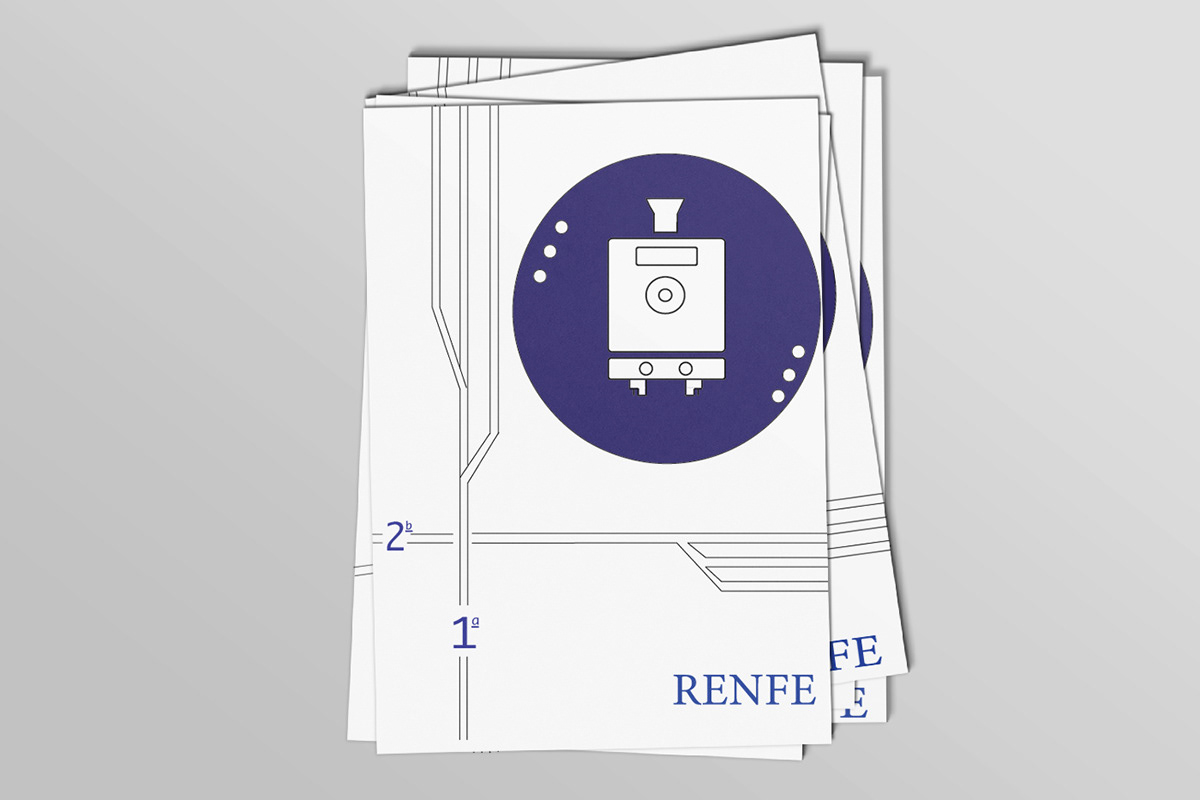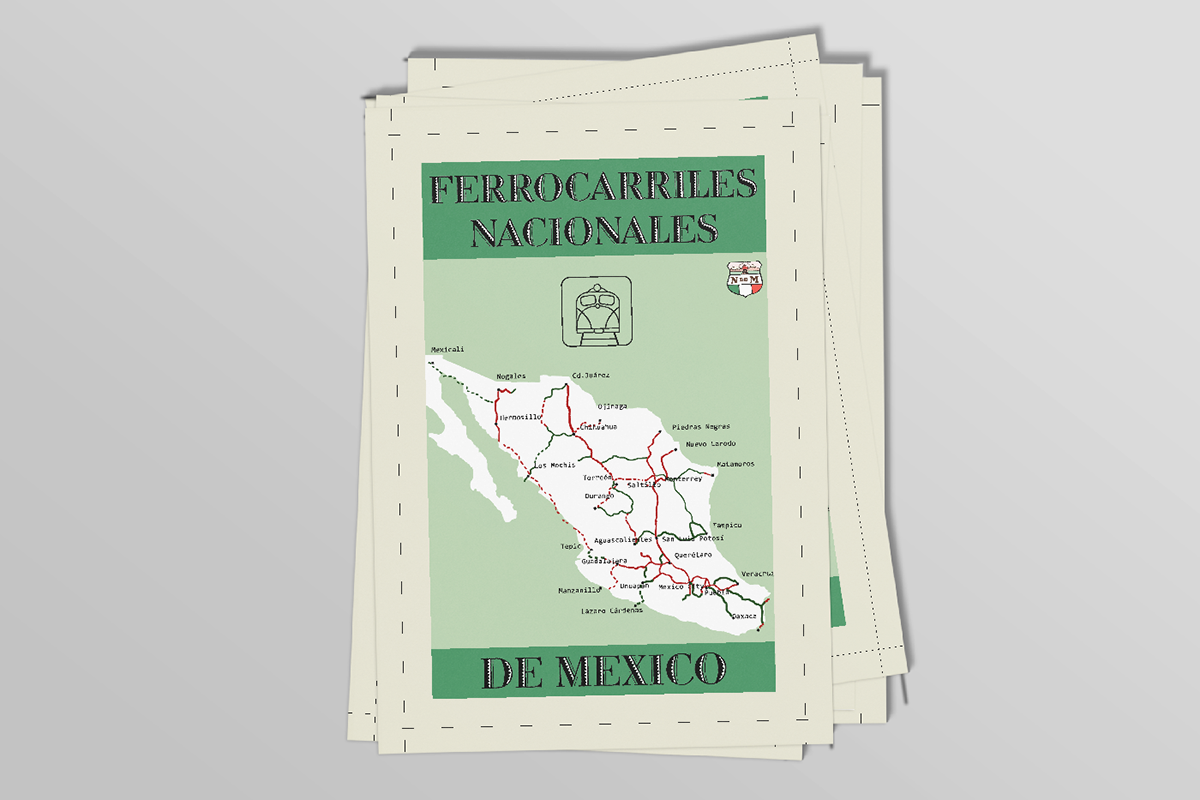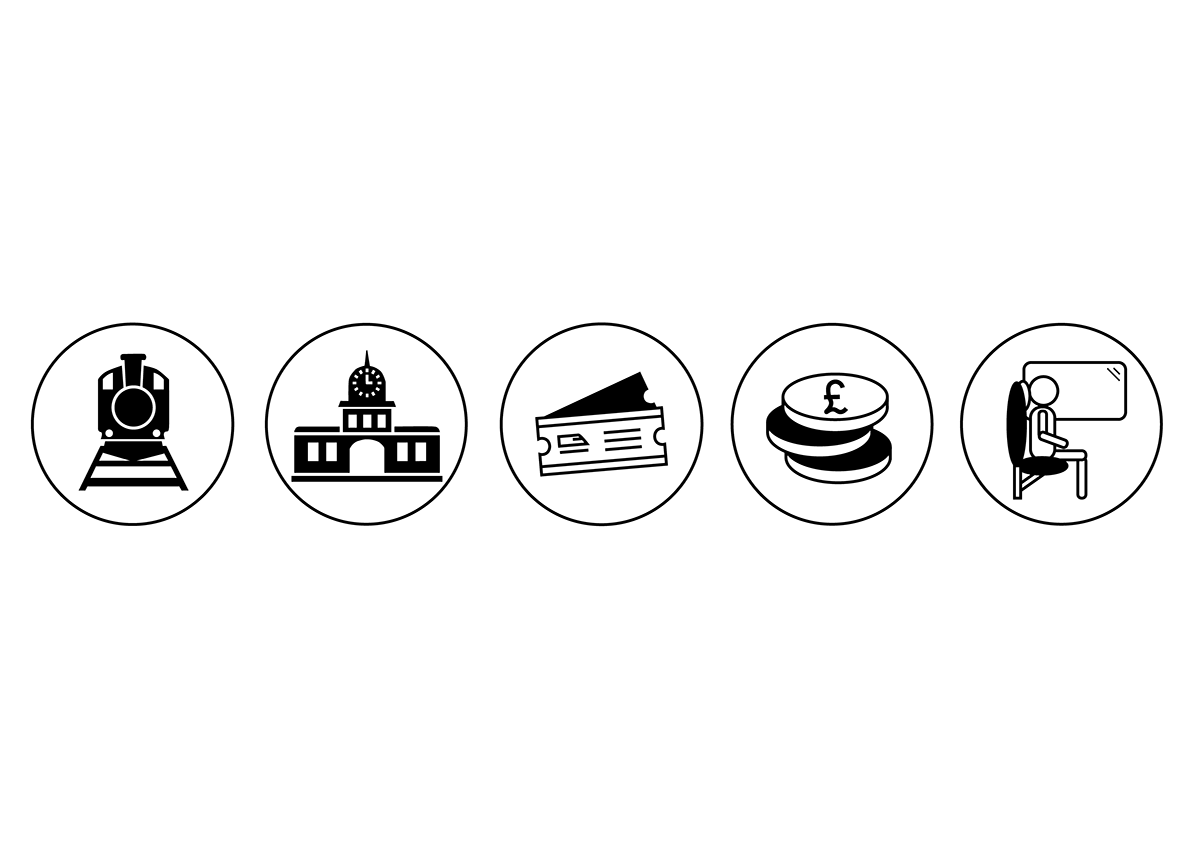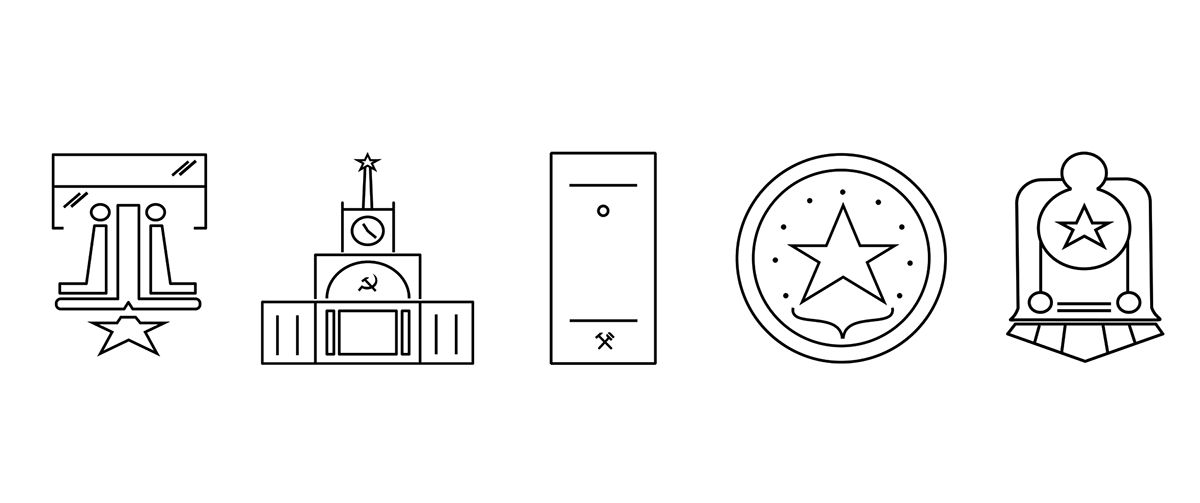Train Station Symbols design
BA Digital Design @Vakalo Art & Design College ©2022
2nd Year | Graphic Design Applications Course
November 24th - December 22rd 2022
Brief:
November 24th - December 22rd 2022
Brief:
Design a symbol set for the needs of a train station that it's placed in a different - past period of time and country. Then design a cover for a train time schedule.
Each student was given a specific place and time period. A good research was mandatory in order for the designers to have a good understanding of the era and study the different culture. So it's an icon design project with a time twist.
The 2021 version of the project is here.
The 2021 version of the project is here.
Participants / Era / Country:
Constadis Sideris / 1965 / The Netherlands
Luna Selimaj / 1965 / France
Melina Anastasopoulou / 1955 / Brazil
Elena Nakou / 1970 / Spain
Thalia Savvopoulou / 1960 / Norway
Mike Chartofilis / 1945 / Mexico
Nasos Anastopoulos / 1935 / United Kingdom
Thanos Nikopoulos / 1985 / Soviet Union
Aggeliki Roka / 1940/ Japan
Theodosopoulou Dora / 1960 / Germany
Iris Sotirakopoulou / 1995 / South Korea
Tutor:
Dimitris Kanellopoulos
:::::::::::::::::::::::::::::::::::::::::::::::::::::::::::::::::::::::::::::::::::::::::::::::::::::::::::::::::::
Constadis Sideris / 1965 / The Netherlands





I designed these symbols to represent the railway system in the Netherlands of 1965. The railway was a vital part of the country's infrastructure, connecting people and goods to different parts of the country. In order to properly represent this important network in an easy to understand way, I have created a set of symbols that can be used to identify different railway signs . The symbols represent a train, station, ticket office, passenger seat and money exchange. The symbols are designed to be simple and easily recognisable, so that passengers can quickly identify them. Also they are intended to make the Dutch railway system easier to comprehend and help passengers have a better and faster experience.


Luna Selimaj / 1965 / France






France emerged from World War II in the 1960s, rebuilding the country naturally and the nation's national identity through the French Fifth Republic. Under the leadership of President Charles de Gaulle (1959–1969), France regained its great power status. Expressways were built throughout the countryresulting in many railway lines being closed. Later the Airbus aircraft manufacturing industry was established. Like the TGV high-speed train in 1972.


Melina Anastasopoulou / 1955 / Brazil








The train station symbols for Brazil in 1955 evoke a distinct aesthetic of the era. The train route flyer is designed to be both functional and aesthetically pleasing, featuring a color scheme of warm, inviting colors. It’s designed to be eye-catching and vibrant, but also to stand out on the station walls. The overall design of the train station symbols reflects the vibrant, energetic atmosphere of Brazil in the 1950s, providing a unique and memorable experience for passengers.


Elena Nakou / 1970 / Spain




Spain in 1970 was in the period of development as far as their reference railway stations and its trains. He was saying goodbye familiarly trains and transportation habits he knew. At that time came the first express train, i.e. trains that went faster but also provided beds for longer trips. Now the trains for that time had become a means of transport for people and not for goods as it used to be.


Thalia Savvopoulou / 1960 / Norway







The Norway Flam railway system, established in 1960, was a major component of the country's politics at the time. It was heralded as a great achievement, connecting cities and regions that had previously been isolated. With its opening, a strong sense of national pride and identity was celebrated. My assignment was to create custom made icons and a timetable to fit the occasion. These icons consisted of a train, station, train ticket, money exchange and passenger seats while depicting the newly opened railway and the vibrant landscape of Norway that it ran through. Through my research I found out about the deferent design of trains Norway had at the time and the “flat” stations that are common in almost all the country. The project was interesting, and it really helped to highlight the importance of the railway system politically and socially to the people of Norway.


Mike Chartofilis / 1945 / Mexico






While assisting the USA during WW2 as their biggest military resource provider amongst Latin America, including vital minerals such as copper, zinc, mercury, cadmium, cadmium, graphite and lead, Mexico went through a huge industrial and economical growth spike, in order to be able to manage providing these resources.
This resulted in a golden age in Mexico's economy on what is called, "The Mexican Miracle", where Mexican economy grew by 4% each year. Because of this there was an introduction to newer train models, such as the DR-6-4-2000 locomotive, which assisted Mexico in transportation until it was scrapped in 1957.
This resulted in a golden age in Mexico's economy on what is called, "The Mexican Miracle", where Mexican economy grew by 4% each year. Because of this there was an introduction to newer train models, such as the DR-6-4-2000 locomotive, which assisted Mexico in transportation until it was scrapped in 1957.


Nasos Anastopoulos / 1935 / United Kingdom






The history of rail transport in Great Britain 1923–1947 covers the period when the British railway system was run by the Big Four group of companies – the London, Midland and Scottish Railway (LMS); the Great Western Railway (GWR); the London and North Eastern Railway (LNER); and the Southern Railway (SR). The period includes the investment following World War I; the rise in competition from the roads in the 1920s; development of steam locomotives capable of sustained 100 mph (160 km/h) running; the Great Depression of the 1930s; World War II and its aftermath; and the lead up to nationalisation during 1947.


Thanos Nikopoulos / 1985 / Soviet Union





The Soviet Railways was the state owned national railway system of the Soviet Union, headquartered in Moscow. The railway started operations in December 1922, shortly after the formation of the Soviet Union and were the largest unified railway in the world and the backbone of the Soviet Union's economy. The railway was directly under the control of the Ministry of Railways in the Soviet Union. Soviet Railways greatly upgraded and expanded the Russian Imperial Railways to meet the demands of the new country. It operated until the dissolution of the Soviet Union in December 1991.


Aggeliki Roka / 1940/ Japan

Rail transport in Japan is a major means of passenger transport, especially for mass and high-speed travel between major cities and for commuter transport in urban areas. It is used relatively little for freight transport, accounting for just 0.84% of goods movement. The privatized network is highly efficient, requiring few subsidies and running with extreme punctuality.


Theodosopoulou Dora / 1960 / Germany





Germany in the sixties was a rocky place to be. The fall of the Berlin wall however, was a spark of hope. A new era in the development of democracy, in the terribly conditioned country. Inevitably, train frequency rapidly increased on the East and West corridors yet the railways didn’t unite. Administrative and organisational problems led to the decision to completely re-organise and reconnect Germany's railways.


Iris Sotirakopoulou / 1995 / South Korea

In this project, the specific symbol set was designed for the needs of a train station in South Korea in 1975. Firstly, I conducted a thorough research into South Korea to learn more about their culture and traditions. Moreover, extended research was conducted to gather more information about the living conditions in this period of time. Exploring this period of time, it is worth mentioning that the year of 1975 marked the 25th anniversary of the outbreak of the Korean war. However, South Koreans were always endeavoring to be fully prepared for a potential North Korean attack. As a result, South Koreans were forced to follow specific exercises. During my research, I discovered photographic evidence which was very useful as I managed to draw conclusions and evaluate the lifestyle of South Korea in 1975. Drawing from my research, I created five icons and one brochure which mentions the scheduled routes of the train.


